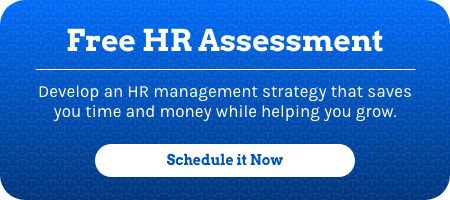How you manage your employee processes, from hiring to helping them grow, can either fall under human resources, organizational development or both. For example, recruitment and compliance fall under human resources yet performance management is also considered to be a type of organization development. So many similarities exist between organizational development and human resources that they are often considered close cousins, but there are some definite differences between the two.
What is Organizational Development?
Organizational development, as defined in Thomas G. Cummings and Christopher G. Worley’s book Organization Development & Change, uses behavioral science to develop, improve and reinforce strategies, structures and processes in order to advance overall organizational effectiveness. Organizational development is a tough subject to understand and conquer. Think of it this way, organizational development uses facts and figures from science-based processes to implement change at a company. Have consistently high operating costs? Analyze benefit and payroll costs and make deductions where necessary.
The organizational development process is anything but “try it out and see what happens”. Instead, OD practitioners use scientific findings to create a structured and controlled process. It is all about data and testing to make sure any and all outcomes reflect the original intent or goal. Organizational development can be used to implement company-wide organizational change or simply applied to one location or even a single department.
What’s the Goal of Organizational Development?
Organizational development is all about creating change that makes a company more effective. Change can be measured by financial performance, customer satisfaction, organizational member engagement and an increased capacity to renew the business. Each company measures success a little differently. While one may be focused on making more money, another may use organizational development to improve company culture or promote company values throughout the workplace.
According to Digital HR Tech, if there could be one central goal of organizational development, it would be increasing competitiveness. Competitive advantage is what makes a company’s goods or services superior to all other customer options. Organizational development can help companies win within their marketplaces.
Examples of Organizational Development
Cummings and Worley’s book dedicates chapters to examples of organizational development. The book breaks down the examples, otherwise known as techniques or interventions, into different categories including human process interventions, technostructural interventions, human resource management interventions and strategic change interventions. Below is a brief synopsis of each.
Human Process Interventions
Human process interventions fall into two categories, personal or group approaches and organizational approaches.
- Interpersonal and group process approaches include process consultation, third-party interventions, and team building. Process consultation helps the group understand, diagnose and improve their behaviors. Third-party interventions focus on dysfunctional interpersonal conflict. Team building helps teams perform tasks better and ensures group goals are clear.
- Organizational approaches include organizational problem solving, leadership, visioning and task-oriented accomplishments between groups. These approaches help organizations encourage their employees to identify and confront pressing issues. Organizational approaches also include conflict resolution and large-group interventions which allow a variety of stakeholders to interact simultaneously.
Technostructural Interventions
Technostructural interventions are change programs that focus on the technology and structure of an organization. These programs include structural designs, which move away from traditional ways of dividing a company’s work (like functional, divisional and matrix structures) to more integrative and flexible forms, like customer-centric and network structures. Companies diagnose their issues before determining which structure is appropriate. For example, a technostructural approach might be downsizing, whether through layoffs, restructuring and/or outsourcing to reduce costs.
Technostructural interventions also include total quality management or continuous process improvement, work design, i.e., aligning jobs to be efficient and provide the maximum amount of satisfaction and also job enrichment.
Human Resource Management Interventions
Human resource management interventions look at the way employees are managed, typically through performance management, employee development, benefits management and diversity.
Performance management deals with regular performance reviews. Employee development offers training to employees to improve their work or further their careers. Benefits management includes health and wellness benefits. Diversity interventions focus on increasing diversity in the workplace including gender, race, age, sexual orientation, disabilities, veteran status and culture.
Strategic Change Interventions
Strategic change interventions center around transforming an organization or changing its basic character. These revolutionary interventions go beyond making small improvements and instead focus on changing the way the company views itself and its environment. Strategic change interventions include transformational change, continuous change and transorganizational change.
Transformational change involves changing how the company is structured and the way it operates. Continuous change occurs over time and transorganizational change includes change with mergers, acquisitions and strategic networking, according to Digital HR Tech.
What Is Human Resources?
The purpose of a human resources department is to manage the employee process, from hiring to termination. Those processes can include recruitment, hiring, onboarding, payroll, compensation, time and attendance, benefits and performance management, development and succession planning. And what’s more is HR must perform all of these processes while making sure the company maintains compliance, whether that compliance needs to occur pre- or post-hire. HR is also the primary factor in eliminating employee risk, either by reducing turnover, adhering to Fair Labor Standards Act requirements or offering fair compensation.
What’s the Goal of HR?
The goal of HR is to hire, manage and grow your employees. But more than that, good HR processes handle these tasks easily and efficiently, reducing strain on your staff and your employees.
- Easily recruit new employees while maintaining hiring compliance. An Applicant Tracking System (ATS) can target a diverse group of applicants by automatically posting job listings on multiple job boards. HR departments can use it to track who applies, essential for those employers who abide by Equal Employment Opportunity regulations. An ATS can also automatically add EEO taglines and keep records of every applicant, vital information in the event of an audit by the Office of Federal Contract Compliance Programs (OFCCP).
- Get employees on the job faster, while ensuring legal compliance. Onboarding should be efficient and allow new employees to upload their personal information, including W-2 information, while reading and signing off on employee handbooks, ensuring legal compliance is met for each and every hire.
- Reduce paperwork while quickly and accurately producing pay checks. Cloud-based payroll and time and attendance seamlessly work together to quickly provide accurate pay checks to employees. Time and Attendance tracks when and where hourly employees work, so not only can employers monitor labor costs, but there’s never a question if overtime is due. (Every non-exempt employee must be paid time-and-a-half for any time worked over 40 hours per week, per the FLSA.) The Time and Attendance system updates payroll in real time, so staff are never waiting for paper time sheets to start the process. Payroll has accurate information, that’s been signed off by employees, to quickly process weekly, bi-weekly, bi-monthly or monthly pay.
- Reduce turnover risk with competitive pay.HR departments that utilizecompensation management have the ability to stay competitive by offering wages that reflect the market while rewarding high performers, helping to keep employees engaged and reducing turnover. HR can use the software to assess the potential impact of pay changes to company budgets and streamline compensation decisions across an organization.
- Offer transparency on government-mandated health insurance. HR can simplify open enrollment by allowing employees access to plan options. Employees update their own life changes, adding or removing deductions, so employers don’t have to stress about updating information themselves. A good benefits management system should also maintain compliance by taking the confusion out of employee eligibility and offering reporting features for the Affordable Care Act (ACA).
- Keep employees engaged while enforcing policies and procedures. HR is directly involved in growing an organization’s employee base with performance management and development. Regular performance reviews give managers and employees the ability to set and track goals. These one-on-ones also offer valuable feedback from the employee about their position and future with the company. Learning management not only keeps workplaces safe by requiring certification renewals but also updates employees on changes in company policies and procedures. Update the company’s work-from-home policy last year? Alert employees to access the updated policy in their LMS, read and sign off on completion. Regular development also helps organizations fill any skills gaps at the company.
How OD and HR Relate or Overlap
Organizational development and human resources often get confused because they tend to overlap when it comes to employee management. Performance management, employee development and benefits management all tend to fall on human resources’ shoulders. This area of employee management is also directly related to company goals. Strategic goals, i.e., increase production, increase sales and lower costs, are all created, managed and promoted through performance management, development and benefits.
Consider if a company’s organizational development team wants to implement technostructural interventions to its production line. Employers will need to use development initiatives to train employees on new job alignments. Or, if od practitioners want to implement team building interventions, performance management provides 360-degree feedback so managers can get a sense of how teams work together.
Improving diversity is also part of HR’s scope. Recruiting a more diverse pool of candidates requires HR to reach out to job boards that target minorities as well as offering employee rewards for minority referrals. HR can use development procedures to train employees on behaviors and language that are racist or intolerant. Diversity can also be used in future team building, recruitment and retention plans.
Organizational development is not easy, and we’ve just barely introduced the topic; the Cummings and Worley book on the subject is nearly 800 pages if that’s any indication of its complexity. Whether or not your company chooses to focus on organization development, it inevitably will overlap with human resources, which is where Arcoro comes in.
We specialize in making all the human resources processes easier. Our software solutions work together to automate processes like recruiting, onboarding, training, performance, benefits, payroll and more, so your company not only maintains compliance, but has time to look at the big picture items organizational development addresses. If you’re currently spending hours a week looking at paper resumes or manually processing payroll, how will you find the time to make strategic changes that will affect how your company operates? Take our Free HR Assessment to see if there are areas where Arcoro can give you some of that time back.
Take our Free HR Assessment to see if there are areas where Arcoro can give you some of that time back.




